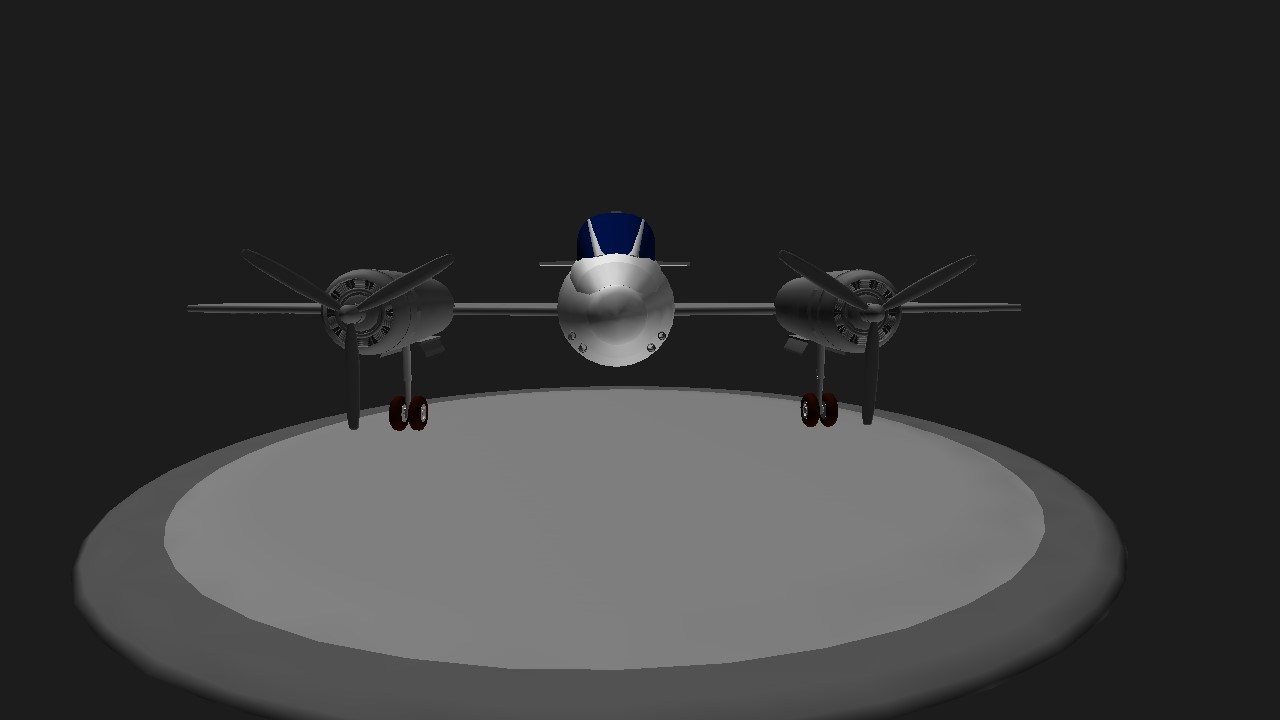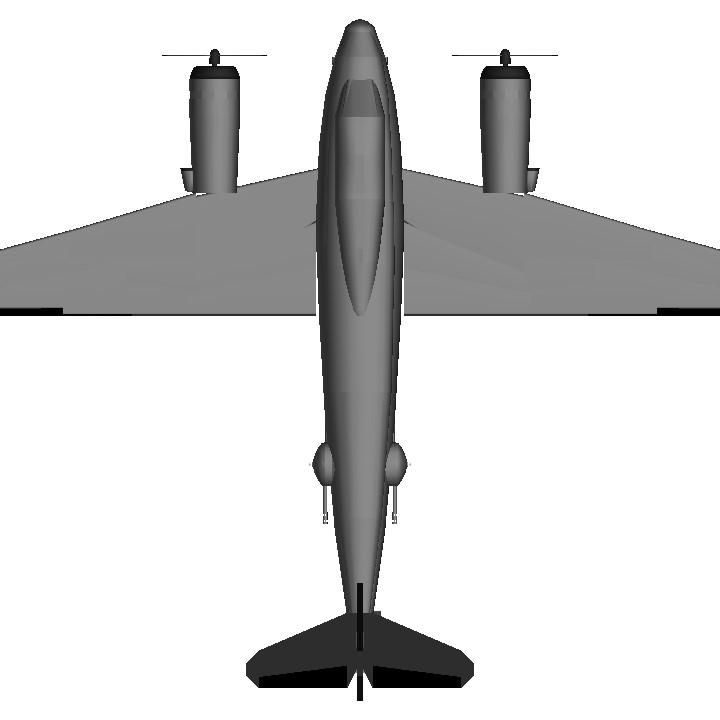Credits To: https://www.simpleplanes.com/u/DestinyAviation for his original
design.
Note: Further detailing will be added soon as I have been busy lately.
Controls:
AG1: Toggle Main Cannons
AG2: Toggle Barbettes (Cannons In Side Pods)
History: The Messerschmitt Me 410 Hornisse ("Hornet") was a German heavy fighter and Schnellbomber used by the Luftwaffe during World War II. Though essentially a straightforward modification of the Me 210, it was designated the Me 410 to avoid association with its notoriously flawed predecessor.
The Me 410 night bomber proved to be an elusive target for the RAF night fighters. The first unit to operate over the UK was V./KG 2, which lost its first Me 410 on the night of 13–14 July 1943, when it was shot down by a de Havilland Mosquito of No. 85 Squadron RAF.
The Me 410 was also used as a bomber destroyer against the daylight bomber formations of the USAF, upgraded through the available Umrüst-Bausätze factory conversion kits, all bearing a /U suffix, for the design — these suffixes could vary in meaning between subtypes. As one example, the earlier Me 410 A-1/U1 designation signified a camera-fitting in the undernose ordnance bay for reconnaissance use (as the A-3 was meant to do from its start), while the same /U1 designation or the later Me 410 B-2 signified a mount of a pair of the long-barreled, 30mm calibre MK 103 cannon in the undernose ordnance bay. The /U2 suffix designated a fitment of two additional 20 mm MG 151/20 cannons in the under-nose ordnance bay instead — the A-1/U4 subtype fitted the massive, 540 kg (1,190 lb) weight Bordkanone series 50 mm (2 in) BK 5 cannon, loaded with 21 rounds in the same undernose ordnance bay in place of either the /U1's cameras or MK 103s, or the /U2's added pair of MG 151/20 autocannon. For breaking up the bomber formations, many Me 410s also had four underwing tubular launchers, two per wing panel, firing converted 21 cm (8 in) Werfer-Granate 21 infantry barrage rockets. Two Geschwader, Zerstörergeschwader 26 and 76, were thus equipped with the Me 410 by late 1943.
They were moderately successful against unescorted bombers through 1943, with a considerable number of kills against USAF day bomber formations being achieved. However, the Me 410 was no match in a dogfight with the lighter Allied single-engine fighters such as the North American P-51 Mustang and Supermarine Spitfire. In early 1944, the Me 410 formations encountered swarms of Allied fighters protecting the bomber streams, usually flying far ahead of the combat box formations as an air supremacy move in clearing the skies of any Luftwaffe opposition, resulting in the Me 410's previous successes against escorted bombers now often being offset by their losses. An example of this — as part of a campaign started two days earlier by the USAF — was on 6 March 1944 during an attack on Berlin by 750 8th AF heavy bombers, when 16 Me 410s were shot down in return for eight B-17s and four P-51s (which were destroyed by Bf 109 and Fw 190 fighters escorting the Me 410s).[1][2] The following month on 11 April, with 8th AF raids hitting Sorau, Rostock and Oschersleben, II./ZG 26's Me 410s accounted for a rare success, initially bringing down 10 B-17s without any losses. During the course of the same raid, their second sortie was intercepted by P-51s that destroyed eight Me 410s and three Bf 110s. Sixteen crewmen were killed and three wounded.[3]
From mid-1944, despite being Hitler's favourite bomber destroyer, the Me 410 units were taken from Defence of the Reich duties and production was phased out in favour of heavily armed single-engine fighters as dedicated bomber destroyers, with the Me 410s remaining in service flying on reconnaissance duties only.[4] Some Me 410s were used with Junkers Ju 188s during the Battle of Normandy, for high-altitude night reconnaissance.
Specifications
General Characteristics
- Predecessor Messerschmitt P.1123 J-1
- Created On Android
- Wingspan 46.8ft (14.3m)
- Length 44.3ft (13.5m)
- Height 12.4ft (3.8m)
- Empty Weight 17,665lbs (8,012kg)
- Loaded Weight 31,236lbs (14,168kg)
Performance
- Power/Weight Ratio 1.079
- Horse Power/Weight Ratio 0.112
- Wing Loading 87.4lbs/ft2 (426.6kg/m2)
- Wing Area 357.5ft2 (33.2m2)
- Drag Points 6495
Parts
- Number of Parts 140
- Control Surfaces 4
- Performance Cost 628






